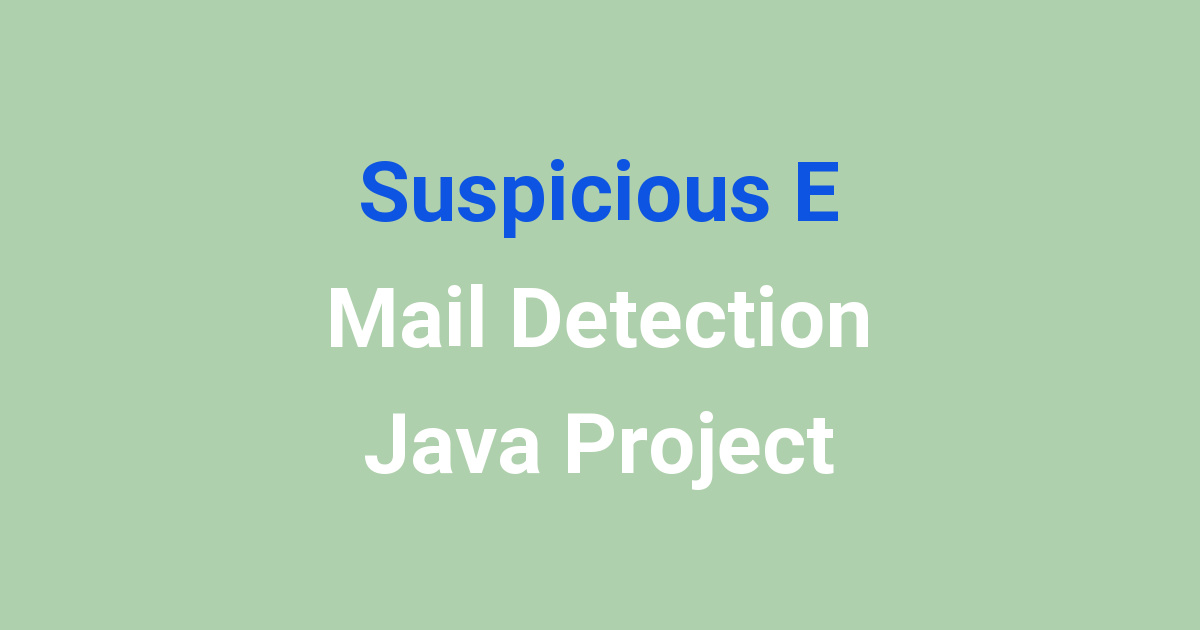Java project for detecting suspicious emails.
Introduction
Email has become an essential form of communication in today’s digital world. However, with the rise of cyber threats, it is crucial to ensure that users are protected from malicious emails. One common form of cyber attack is phishing, where attackers send deceptive emails to trick users into revealing sensitive information. In response to this threat, our project focuses on developing a suspicious email detection system using Java.
Problem Statement
The problem we aim to address is the inability of users to differentiate between legitimate and suspicious emails. Traditional email filters may not always be effective in detecting phishing emails, as attackers constantly find new ways to bypass them. This poses a significant risk to users who may unknowingly fall victim to phishing attacks and compromise their personal information.
Existing System
The existing email filters typically rely on static rules and patterns to identify spam or phishing emails. However, these filters may not always be accurate in detecting new and evolving threats. Moreover, attackers can easily manipulate the content and structure of emails to evade detection by traditional filters.
Disadvantages
– Inaccurate detection of suspicious emails
– Vulnerability to new and evolving phishing tactics
– Limited effectiveness in preventing phishing attacks
Proposed System
Our proposed system utilizes machine learning algorithms to dynamically analyze the content and metadata of emails to detect suspicious patterns. By training the system on a dataset of known phishing emails, it can effectively identify and flag potential threats. Additionally, our system will continuously adapt and learn from new data to improve its detection capabilities.
Advantages
– Improved accuracy in detecting suspicious emails
– Adaptive learning capabilities to stay ahead of evolving threats
– Real-time monitoring and alerts for users
Features
Our suspicious email detection system will include the following key features:
1. Content analysis: The system will scan the content of emails for suspicious keywords, URLs, and attachments commonly found in phishing emails.
2. Metadata analysis: The system will examine email headers and metadata for anomalies that may indicate a phishing attempt.
3. Machine learning algorithms: The system will employ supervised machine learning techniques to classify emails as legitimate or suspicious based on patterns and features.
4. User interface: The system will provide a user-friendly interface for users to review and manage flagged emails, as well as report false positives.
Conclusion
In conclusion, our project aims to address the growing threat of phishing attacks by developing a robust suspicious email detection system. By leveraging machine learning and dynamic analysis techniques, we seek to improve the accuracy and efficiency of detecting malicious emails. With the increasing reliance on email for communication and transactions, it is essential to enhance email security measures to protect users from falling victim to cyber attacks. We believe that our proposed system will make a significant impact in enhancing email security and reducing the risk of phishing attacks.

